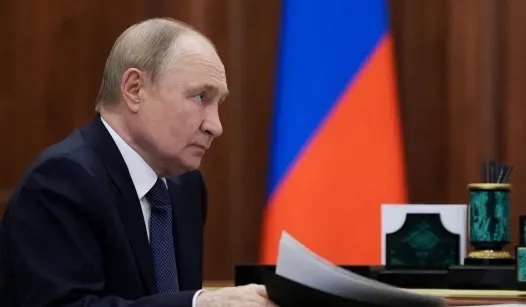In the complex realm of global politics, few figures have captured as much attention as Vladimir Putin. As the President of Russia, his leadership style and decisions have significant implications not only for Russia but for the entire international community. Recently, there has been a noticeable shift in the dynamics of Russian politics, characterized by a sense of stagnation and indecision. This article aims to explore the reasons behind this phenomenon and what it means for both Russia and the world.
At the heart of the current situation is the Russian government’s cautious approach to various domestic and international challenges. Many observers have noted a palpable hesitance among Russian officials to make bold moves, whether in terms of foreign policy or internal reforms. This reticence can be attributed to several factors, including economic pressures, public sentiment, and the geopolitical landscape.
Economically, Russia has faced significant challenges in recent years. The aftermath of international sanctions, combined with fluctuating oil prices, has strained the nation’s economy. These economic difficulties have made the Russian government more cautious in its approach, as any rash decision could exacerbate the situation and lead to further instability. Consequently, the leadership appears to be prioritizing stability over bold initiatives, which has resulted in a prolonged period of inaction.
Public sentiment also plays a crucial role in shaping the political landscape in Russia. There is a growing sense of fatigue among the Russian populace regarding ongoing conflicts and economic hardships. The government is acutely aware of this sentiment and is thus hesitant to engage in any actions that could provoke public dissent. This has led to a political environment where leaders are more focused on maintaining the status quo rather than pursuing aggressive policies that could alienate citizens.
Geopolitically, Russia finds itself in a precarious position. The international community’s response to its actions, particularly concerning Ukraine and other neighboring countries, has created a climate of uncertainty. The fear of further isolation or escalation of tensions has prompted the Russian government to adopt a more measured approach. This strategy of restraint may be seen as a tactical decision to avoid unnecessary confrontation while still projecting strength.
As the world watches, the implications of this prolonged standoff extend beyond Russia’s borders. The indecisiveness within the Russian government raises questions about its future direction and the potential for change. For the United States and its allies, understanding this dynamic is crucial in navigating diplomatic relations and formulating effective policies.
In summary, the current political landscape in Russia is characterized by a cautious and measured approach from its leadership. Economic challenges, public sentiment, and geopolitical considerations all contribute to this atmosphere of indecision. As we continue to monitor developments in Russia, it is essential to recognize the broader implications of this prolonged standoff and its potential impact on global politics.
